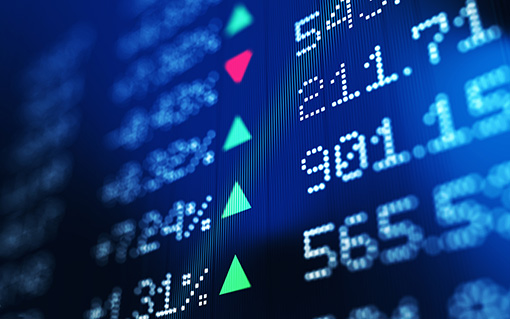2022 started with a bang, but not necessarily the kind investors were hoping for.
Following the holiday rally, US stocks turned sharply lower to start the year, with tech and growth-oriented companies leading the way down. Despite a slight rebound to end the month, major US indices were negative across the board with losses of 3.32% for the Dow, 5.26% for the S&P 500, and 8.42% for the tech-heavy Nasdaq 100.
We have already seen more drawdown in one month of 2022 than we did in all of 2021, so what’s going on? The leading culprit is inflation, along with the Federal Reserve. More specifically, inflation is running at its highest level since the 1980’s, resulting in a more aggressive Fed policy (think interest rate hikes), which is leading to concerns of an economic slowdown. However, the Fed believes there is plenty of room to raise rates without causing a major slowdown from current economic levels.
International stocks were able to deliver a mixed performance, holding up better than their US counterparts with developed countries falling only 3.86% and emerging markets gaining 0.42%. As international stock markets lagged behind the US as a whole in 2021, it seems last year’s lackluster performance created a floor against some of the downside pressure.
While bonds provided more stability in January, rising interest rates still caused bond prices to fall, resulting in a loss for many fixed-income asset classes. The aggregate US bond market fell 2.15% as the 10-year Treasury yield rose from 1.52% to 1.79%.
While 2022 hasn’t gotten off to the start many were hoping for, it’s important to keep everything in perspective. With such a strong, smooth year in 2021, it’s not unreasonable to expect a period of higher volatility as markets “even-out” toward historical averages. Keeping your eye on the bigger picture, rather than focusing on shorter-term market movements, is important to ensuring your plan stays on track for the long-run.
It seems like it was just a dream that oil prices fell into negative territory, but that actually happened less than two years ago (April 2020).
That’s right, in the early days of the pandemic oil producers were paying buyers to take the commodity off their hands over fears that storage capacity might run out.
Today, oil is trading at its highest level since 2014, adding to inflationary pressures. So what’s changed?
To start, following historic production cuts, demand for oil rebounded stronger than expected as economies started to reopen.
More recently, geopolitical risks have investors on edge over potential supply disruptions.
Many experts believe prices could continue to rise in 2022 until the supply/demand equation is more balanced.
Hope you have your paper gifts ready.
January marked the one-year anniversary of meme-stock mania (when groups of individual investors teamed up to buy stocks that were heavily bet against by professional hedge fund investors).
Remember when GameStop, the struggling video game retailer, saw its stock jump 1,700% over the course of just a few weeks?
While the enthusiasm over these stocks has cooled, many remain elevated well above their pre-spike values as retail investors continue to hold on (GameStop is 67% below its peak, but still about 500% above its January 1, 2021 price).
The phenomenon didn’t necessarily have a major lasting impact on investing trends as some had predicted, but it did highlight how easy it is to find and share investment information (both good and bad) in todays world.
Broad Market Returns
| Asset Class | 1 Month | 3 Month | YTD | 1 Year |
| S&P 500 (VOO) | -5.24% | -1.65% | -5.24% | 23.30% |
| NASDAQ (QQQ) | -8.75% | -5.85% | -8.75% | 15.97% |
| Large Cap Growth (VUG) | -9.41% | -7.33% | -9.41% | 16.54% |
| Large Cap Value (VTV) | -1.07% | 2.59% | -1.07% | 26.17% |
| Small Cap Growth (VBK) | -12.83% | -16.79% | -12.83% | -9.86% |
| Small Cap Value (VBR) | -4.41% | -2.75% | -4.41% | 19.99% |
| Developed International (VEA) | -3.86% | -4.35% | -3.86% | 8.13% |
| Emerging Markets (VWO) | 0.42% | -0.99% | 0.42% | -1.40% |
| REITs (VNQ) | -8.42% | -1.65% | -8.42% | 28.66% |
| Aggregate Bonds (BND) | -2.06% | -2.17% | -2.06% | -3.05% |
| Corporate Bonds (VCIT) | -2.48% | -2.50% | -2.48% | -3.36% |
| High Yield Bonds (JNK) | -2.76% | -1.77% | -2.76% | 1.63% |
| Long Term Treasuries (VGLT) | -3.70% | -3.06% | -3.70% | -5.16% |
| International Bonds (BNDX) | -1.38% | -1.08% | -1.38% | -3.02% |
Market Health Indicator
The Market Health Indicator (MHI) measures market health on a scale of 0 – 100, analyzing various market segments such as economics, technicals, and volatility. Higher scores indicate healthier market conditions.

Declined from 64.83 last month, indicating slightly unhealthy market conditions, but still cautiously optimistic for improvements
Fun Facts
- In Q4 2021, more than 10% of first-time homebuyers sold some form of cryptocurrency to fund a downpayment.
- Sports fans, get ready! The Winter Olympics officially kick off on Friday the 4th, and Sunday the 13th is the Super Bowl.
- February is one of the most misspelled words in the English language (don’t forget that first r).
- Speaking of spelling, there’s only one letter that isn’t included in any US state name – Q.
– The Aspire Wealth Team


